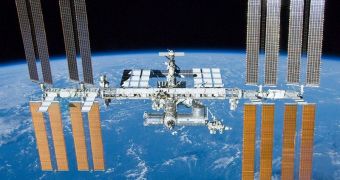Scientists at NASA plan to use the International Space Station as a testbed for conducting an experiment that will see astronauts obtaining the coldest temperatures in the known Universe. The research effort will produce temperatures just above absolute zero.
Physicists say that absolute zero is currently defined as 0 Kelvin. This is the equivalent of −273.15 degrees Celsius, or −459.67°F. No matter how cold outer space is, it will never be able to reach this extreme value, due to the fact that this would violate the laws of thermodynamics.
Even though they know they will never be able to reach absolute zero no matter where and how they attempt to do this, NASA scientists are interested in setting up the Cold Atom Lab in order to determine how close they can get to this unreachable value, Space reports.
According to researcher Rob Thompson from the NASA Jet Propulsion Laboratory (JPL) in Pasadena, California, the Cold Atom Lab plans to push the lowest-possible temperature to within 100 picoKelvin above absolute zero, which is the equivalent of one ten billionth of a degree.
“We're going to study matter at temperatures far colder than are found naturally. We aim to push effective temperatures down to 100 pico-Kelvin,” says Thompson, who is a project scientist for CAL.
The Cold Atom Lab is an experiment that contains an atomic refrigerator of sorts, capable of cooling down atoms to extremely low temperatures. JPL investigators plan to launch it to the ISS by 2016.
The behavior of ultracold atoms was predicted by physicists Albert Einstein and Satyendra Bose in the early 20th century. They said that cooling sodium and rubidium atoms to temperatures near absolute zero would lead to a new state of matter known as Bose-Einstein condensates (BEC).
“BEC basically consist of atoms that act as both particles and waves, just like photons do all the time. The Cold Atom Lab will allow us to study these objects at perhaps the lowest temperatures over,” Thompson explains, adding that BEC interact in very peculiar ways, unlike liquids, gases or solids.
The reasons why this experiment will be conducted in microgravity is that scientists need to take extremely sensitive measurements of the weak interactions that will occur when two BEC interact. By taking gravity out of the equation, conducting this study will become easier.
“This could lead to the discovery of interesting and novel quantum phenomena. We're entering the unknown,” Thompson concludes.

 14 DAY TRIAL //
14 DAY TRIAL //